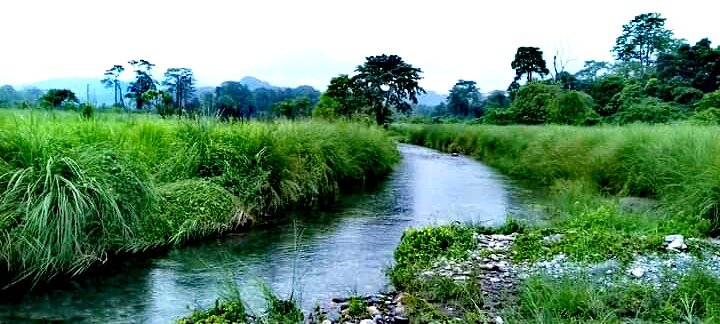Raimona National Park in Assam, India recently saw a unique event: the first photographic evidence of the Mainland Serow. This uncommon and vulnerable species, classified by the International Union for Conservation of Nature (IUCN), has been photographed, eliciting excitement and hope among conservationists and wildlife enthusiasts.
The Mainland Serow: A Species at Risk
The Mainland Serow (Capricornis sumatraensis thar) is a distinct species that can be found from the Indian subcontinent’s Himalayas to southern China, mainland Southeast Asia, and Sumatra. Despite its widespread distribution, the species is extremely vulnerable to poaching, habitat degradation, and fragmentation.

The Fall: How and Why the Mainland Serow Became Endangered
There are several reasons for the drop in the Mainland Serow.
- Bushmeat poaching: For its meat, the Serow has been heavily hunted.
- Destruction of Habitat: Their native habitats have been split up and devastated by logging and land change.
- Ethnopolitical Violence: The ecology in Assam has been further deteriorated by decades of strife.
- Lack of Information: Effective conservation efforts have been impeded by the lack of trustworthy information on their numbers and dispersion.
The Rediscovery: Catching the Serow on Camera
Aaranyak, a regional biodiversity conservation organization, and the Assam Forest Department collaborated to set up white flash passive Panthera V6 digital camera traps near the Ganda Bajrum anti-poaching camp. These distinct events resulted in the first photographic verification of the Mainland Serow in Raimona National Park. The importance of this discovery cannot be emphasized, as it was published in the Journal of Threatened Taxa by a group of committed scientists and conservationists.
What Does the Return Mean for Biodiversity Conservation?
The reappearance of the Mainland Serow in Raimona National Park provides a ray of hope for biodiversity conservation. Bhanu Sinha, AFS, DFO of Kachugaon Forest Division, expressed his pleasure, saying, “The discovery of Mainland Serow in Raimona National Park is fantastic news for biodiversity conservation, and we are thrilled with the discovery. Our goal is to protect this species and other wildlife across the national park.”
M Firoz Ahmed, a senior scientist at Aaranyak, emphasized the combined efforts that led to this result and recognized the National Park Authority’s contribution in safeguarding this valuable species.
Conservation Efforts to Protect Mainland Serow

The historical backdrop of this place lends further relevance to the discovery. The Assam government designated the area as a national park on June 8, 2021, following the formation of the Bodoland Territorial Council (BTR) in 2020. This political stability has boosted conservation efforts, making the environment safer for species. The current strategies include:
- Anti-poaching measures include increased surveillance and enforcement to deter illicit hunting.
- Habitat restoration refers to the efforts to rebuild and protect degraded habitats.
- Scientific research entails ongoing studies to collect data and develop efficient conservation strategies.
Future Conservation Strategies to ensure Long-Term Survival
To secure the future of the Mainland Serow, extensive strategies are required, such as:
- Population Recovery: Taking steps to increase Serow numbers, such as habitat protection and anti-poaching efforts.
- Community Engagement: Involving local communities in conservation initiatives to promote long-term cohabitation.
- Technological Advancements: Using technology for monitoring and research to gain a better undestanding of Serow populations and their habitats.
- Collaborative Efforts: Organizations, governments, and international environmentalists continue to work together.
A Hopeful Future for Mainland Serow
The rediscovery of the Mainland Serow in Raimona National Park represents a watershed moment for worldwide biodiversity protection. It represents hope and the possibility of effective wildlife protection initiatives. The dedication to conserve this vulnerable species and its environment is stronger than ever, ensuring that future generations can appreciate the Mainland Serow’s beauty and resilience.


